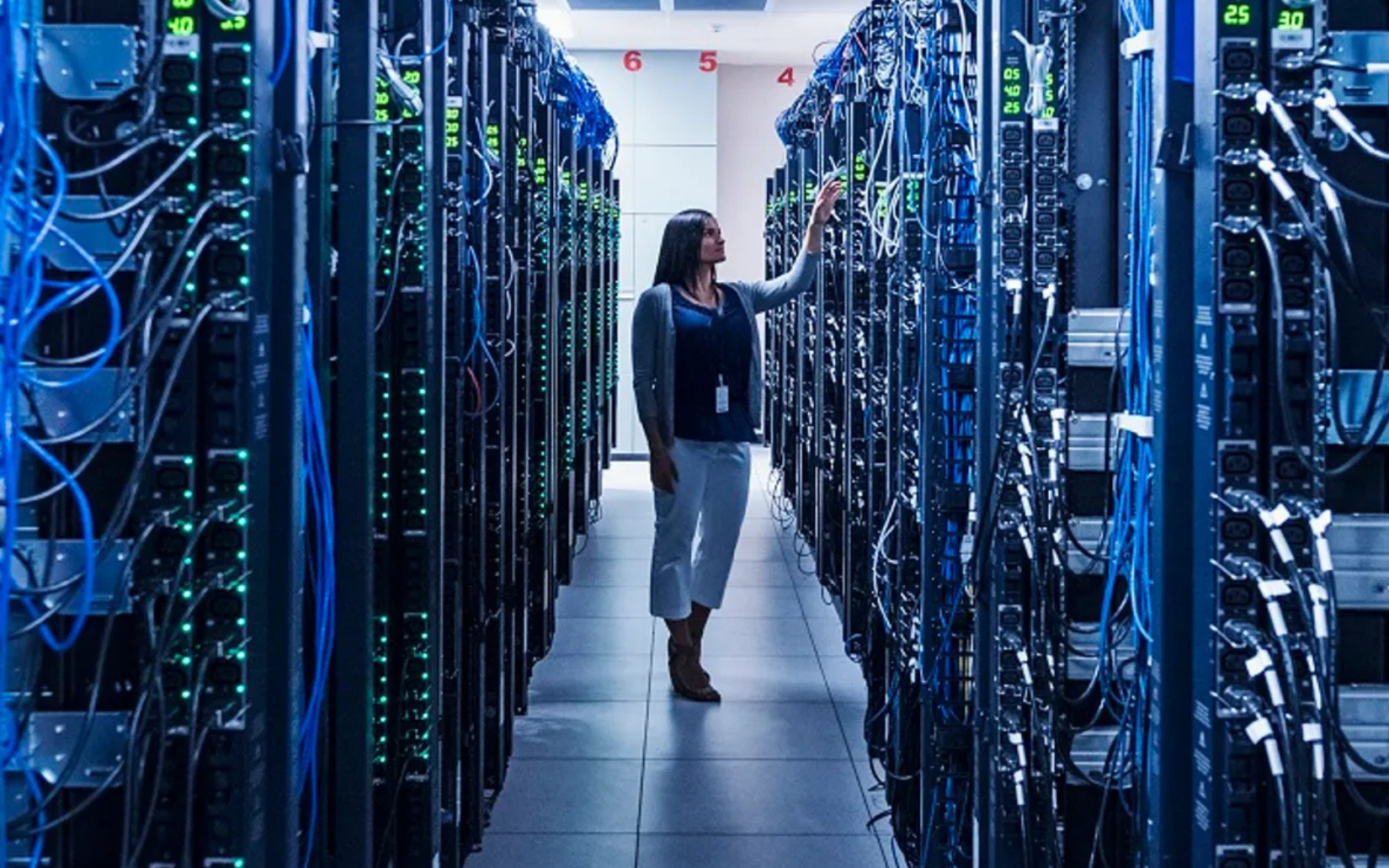Why Logistics Platforms Must Implement Multi-Layer Security
November 3, 2025

Introduction
Logistics operations have become the backbone of the modern economy. Every shipment, route and delivery depends on digital systems. These systems connect fleets, warehouses and partners across continents. Yet with this digital growth, the logistics sector has become a prime target for cybercrime. Logistics cybersecurity is now an urgent priority, not a future goal.
Over the past five years, the logistics sector has experienced a surge in cyberattacks. According to IBM’s 2024 Threat Intelligence Index, supply chain and transport organisations reported a 45 percent increase in ransomware incidents in Europe. The National Cyber Security Centre (NCSC, 2023) warned that logistics companies are now being targeted more frequently than traditional retail or manufacturing. The reasons are clear. Logistics data is highly valuable, and any disruption can cause severe operational and financial damage.
This blog is written for logistics executives, IT directors and decision-makers responsible for digital transformation and supply chain technology. It explains why multi-layer security is essential, how it strengthens protection and what steps logistics businesses should take to implement it effectively.
Multi-layer security refers to using several interconnected defences to protect data, systems and infrastructure. Each layer compensates for weaknesses in another. For example, if a phishing attack bypasses email filters, endpoint protection may stop malware from executing. In logistics cybersecurity, this approach ensures that no single point of failure can disrupt an entire operation.
The Growing Cyber Threat to Logistics Operations
Logistics platforms face threats from multiple directions. The most common are ransomware, phishing, insider threats, and supply chain compromise. Attackers target transport management systems, warehouse software and connected devices that track vehicles and assets. When these systems are compromised, delivery schedules halt, customer data leaks, and reputational damage follows.
A 2024 report by PwC found that 60 percent of logistics firms in the UK experienced a cyber incident in the past year. The same report revealed that 30 percent paid ransoms to restore access to operational systems. The cost of downtime averaged £150,000 per day for large logistics operators. These figures highlight the need for strong, layered defence mechanisms.
Ransomware is one of the most destructive threats. Attackers encrypt business-critical data, demanding payment for decryption keys. In one case in 2022, a European shipping firm suffered a week-long shutdown when ransomware spread from a single workstation to its transport scheduling system. The root cause was traced to weak endpoint protection and insufficient network segmentation.
Another risk is data manipulation. Attackers no longer seek only to steal data but also to alter it. In logistics, even small data changes can have major impacts. For example, altering a delivery manifest could reroute cargo or cause regulatory breaches. Cybergen Security’s team has observed a rise in targeted attacks against logistics platforms where attackers attempt to disrupt data integrity rather than exfiltrate information.
Logistics cybersecurity failures also affect the wider economy. Supply chains are interconnected, and a single breach can ripple across partners, distributors and customers. The UK government’s 2024 Cyber Security Breaches Survey found that 45 percent of logistics firms that experienced a cyber incident also caused disruption to partner organisations. This interdependence makes multi-layer security essential.
Understanding Multi-Layer Security in Logistics Cybersecurity
Multi-layer security means combining several defensive measures at different levels of a system. Each layer acts independently yet supports others. When applied correctly, it builds resilience, ensuring that a single vulnerability does not compromise the entire logistics network.
For logistics companies, these layers include physical security, network defence, access control, endpoint protection, data encryption, and human awareness. Each layer reduces the attack surface.
At the physical level, data centres, warehouses and IoT devices require restricted access and surveillance. Unauthorised entry to a logistics hub could lead to both physical theft and cyber compromise. Cybergen Security recommends integrating smart access controls and CCTV monitoring with digital access logs.
Network security forms the next layer. Firewalls, intrusion detection systems and segmentation limit the spread of attacks. For example, separating warehouse management systems from customer-facing portals prevents attackers from using one compromised system to reach another. Cybergen offers tailored Network Security Solutions designed for logistics firms handling sensitive data across multiple sites.
Access control ensures that users only reach what they need. Role-based access and multi-factor authentication prevent attackers from exploiting single credentials. A logistics driver should not have the same access privileges as a system administrator. Multi-factor authentication also stops attacks based on stolen passwords, which remain one of the most common attack vectors.
Endpoint protection safeguards devices such as handheld scanners, mobile tablets and tracking units. These devices connect directly to logistics platforms and often operate in harsh environments with limited oversight. Cybergen’s Endpoint Protection Services provide continuous monitoring to detect abnormal behaviour before it affects operations.
Encryption adds another defensive layer. It ensures data remains confidential and unaltered, even if intercepted. Strong encryption standards such as AES-256 and TLS 1.3 should be used across all logistics communication channels.
The final and most dynamic layer is human awareness. Many logistics breaches start with phishing or social engineering. Employees in logistics hubs and offices often receive emails that mimic clients or suppliers. Regular security awareness training reduces this risk. According to Gartner (2023), organisations that conduct quarterly phishing simulations reduce successful attacks by up to 70 per cent.
Consequences of Ignoring Multi-Layer Security
Failure to implement multi-layer security exposes logistics firms to serious consequences. The first is operational disruption. When a system fails due to a cyberattack, shipments stall. A single ransomware incident can delay thousands of deliveries. Customers lose confidence, and contracts are often penalised for missed delivery commitments.
Financial losses follow. The IBM Cost of a Data Breach Report (2024) estimates the average breach cost in the transport and logistics sector at £3.6 million. This includes ransom payments, recovery expenses and regulatory fines. Under the UK General Data Protection Regulation (GDPR), companies can face penalties up to £17.5 million or 4 percent of global turnover for data breaches.
Reputational damage is equally significant. Logistics depends on trust. Customers share route data, inventory details and payment information with operators. When breaches occur, customers reconsider partnerships. A survey by Deloitte (2023) found that 65 percent of logistics clients would switch providers within six months of a major security incident.
Ignoring multi-layer security also affects compliance. The UK government and the EU have tightened cybersecurity regulations for critical industries. The Network and Information Systems (NIS2) Directive requires logistics operators to implement appropriate security measures. Multi-layer architecture helps meet these obligations by embedding protection across systems.
There is also a human cost. Cyber incidents increase stress, workload and risk for staff managing recovery. IT teams often work around the clock during attacks. The mental and operational toll reduces productivity long after recovery. Investing in prevention is therefore more cost-effective than recovery.
Building an Effective Multi-Layer Security Strategy for Logistics
Building multi-layer protection starts with understanding your assets. Identify which systems support core logistics processes. These may include enterprise resource planning (ERP), warehouse management systems (WMS), transport management systems (TMS), and customer portals. Map data flows between them to locate vulnerabilities.
Once assets are identified, create layers of defence. Start with secure network architecture. Segment your network so that logistics systems are isolated from corporate and customer-facing environments. Apply strict firewall policies and monitor for abnormal traffic. Cybergen’s Managed Detection and Response Services help detect early signs of intrusion before systems fail.
Next, strengthen identity management. Introduce centralised access control using modern identity and access management (IAM) solutions. Apply least privilege principles and ensure accounts are reviewed regularly. Multi-factor authentication should be mandatory across all systems.
Protect endpoints by deploying security agents on all devices, including mobile scanners and tablets. Enable remote wipe features for lost devices. Regular patching must be scheduled to close known vulnerabilities. According to NCSC (2024), unpatched systems remain one of the top three causes of successful attacks.
Data protection requires encryption both in transit and at rest. Ensure backup copies are encrypted and stored offline. Backups should be tested monthly to confirm recovery works. Cybergen provides Data Backup and Recovery Services designed to safeguard business continuity for logistics operators.
Human factors must not be ignored. Regular training, phishing simulations and incident response drills build resilience. Every employee should know how to identify suspicious activity and who to report it to.
Finally, continuous monitoring ensures all layers work together. Security Information and Event Management (SIEM) systems collect and analyse data across the network. When integrated with Cybergen’s Threat Intelligence Services, these systems provide early warnings of targeted attacks.
The Role of Cybergen Security in Strengthening Logistics Cybersecurity
Cybergen Security specialises in delivering tailored multi-layer cybersecurity strategies for logistics and supply chain organisations. Its approach focuses on prevention, detection and response.
Through comprehensive assessments, Cybergen identifies weak points in logistics operations. These assessments include network mapping, penetration testing and vulnerability scanning. The company’s Penetration Testing Services replicate real-world attacks to expose potential failures before adversaries exploit them.
Cybergen also provides compliance support for frameworks such as ISO 27001, Cyber Essentials and NIS2. These frameworks help logistics companies align with UK government expectations and build customer confidence.
By integrating advanced endpoint protection, real-time threat monitoring and human awareness training, Cybergen creates a complete security ecosystem. This ensures that every digital layer, from data storage to delivery tracking, is safeguarded.
The Future of Logistics Cybersecurity
The future of logistics cybersecurity will depend on how well organisations adapt to emerging threats. Artificial intelligence and automation bring efficiency but also create new vulnerabilities. Attackers are now using AI-driven tools to identify weaknesses faster than human analysts.
Quantum computing will also challenge current encryption standards. Logistics firms must begin exploring quantum-resistant algorithms to protect long-term data confidentiality. Research from the University of Cambridge (2024) suggests that quantum computing could break current encryption standards by the early 2030s.
Regulatory pressure will continue to grow. Governments recognise that logistics is part of critical national infrastructure. Operators must demonstrate resilience not only through compliance but through proactive security investments.
Partnerships with trusted cybersecurity providers like Cybergen Security will become central to operational strategy. Continuous improvement, regular audits and shared intelligence will define successful logistics cybersecurity programmes.
Summary
Logistics platforms are now digital ecosystems. Every process depends on interconnected technology. This interconnectivity brings efficiency but also new risks. Multi-layer security provides the only sustainable defence against the rising tide of cyber threats.
When logistics operators protect every layer of their digital environment, they protect the flow of goods, the trust of partners and the stability of entire supply chains. Multi-layer security transforms cybersecurity from a reactive function into a core business enabler.
References
Deloitte 2023, Cyber Risk in Supply Chain and Logistics, Deloitte Insights, London.
IBM 2024, Cost of a Data Breach Report, IBM Security, Armonk.
National Cyber Security Centre (NCSC) 2023, Threat Report: Transport and Logistics, UK Government, London.
PwC 2024, Cyber Threats in Logistics 2024, PwC UK, London.
Gartner 2023, Security Awareness Training Benchmark Study, Gartner Research, London.
University of Cambridge 2024, Quantum Computing and Cryptography Report, Cambridge University Press, Cambridge.
Ready to strengthen your security posture? Contact us today for more information on protecting your business.
Let's get protecting your business
Thank you for contacting us.
We will get back to you as soon as possible.
By submitting this form, you acknowledge that the information you provide will be processed in accordance with our Privacy Policy.
Please try again later.
Cybergen News
Sign up to get industry insights, trends, and more in your inbox.
Contact Us
Thank you for subscribing. It's great to have you in our community.
Please try again later.
SHARE THIS
Latest Posts









